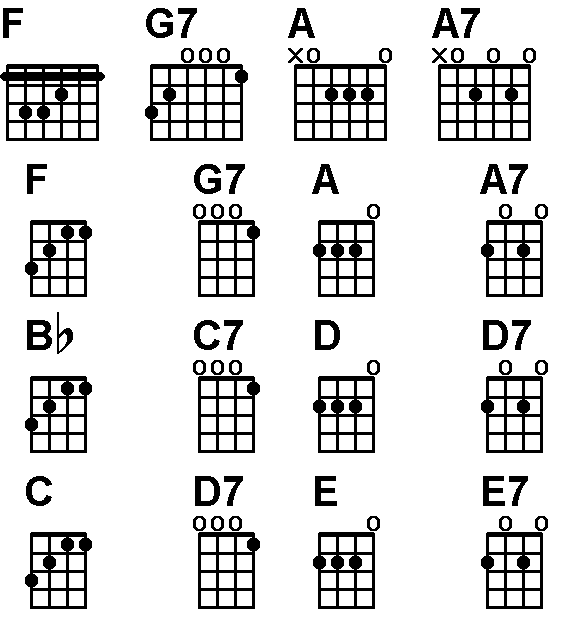
Because of the way the Ukulele is tuned, guitarists who can convert the 6-string guitar chords into 4-string chords and can remember the relationships between chords can easily play any of the ukuleles.
For a demonstration, first let's look at some Guitar chords:

and the same chords on the Tenor Guitar/Baritone Uke:

Notice how if I drop the two bass strings of the guitar chords, the chording is exactly the same (which makes sense because the tuning is exactly the same). So any songs I know using G, C and D/D7 on the guitar can be played on the Baritone Uke using exactly the same fingering.
Now the G, C, and D7 chords on the C-tuned or D-tuned Ukulele are completely different, but because the strings are tuned exactly the same relative to each other, I can use the same chord positions to play songs. They'll be in different keys, but as a guitarist, I don't have to learn any new chords.
Here are the similar chords for a C-tuned Uke:


I can think of these chord relationships in either of two ways. I can learn the new names for them in the different tunings and remember the I, IV, V relationship (G,C,D or D,G,A) or I finger the relationship between "G" or "D" chords on a guitar and not think about the different names, merely "remembering that if I "really" would be playing in "C" on the guitar, then I need to play C,F and G7 chords (or whatever the chord progression is.
This explanation makes a whole lot of sense to some people and is totally confusing to others so take what's useful to you from it.
